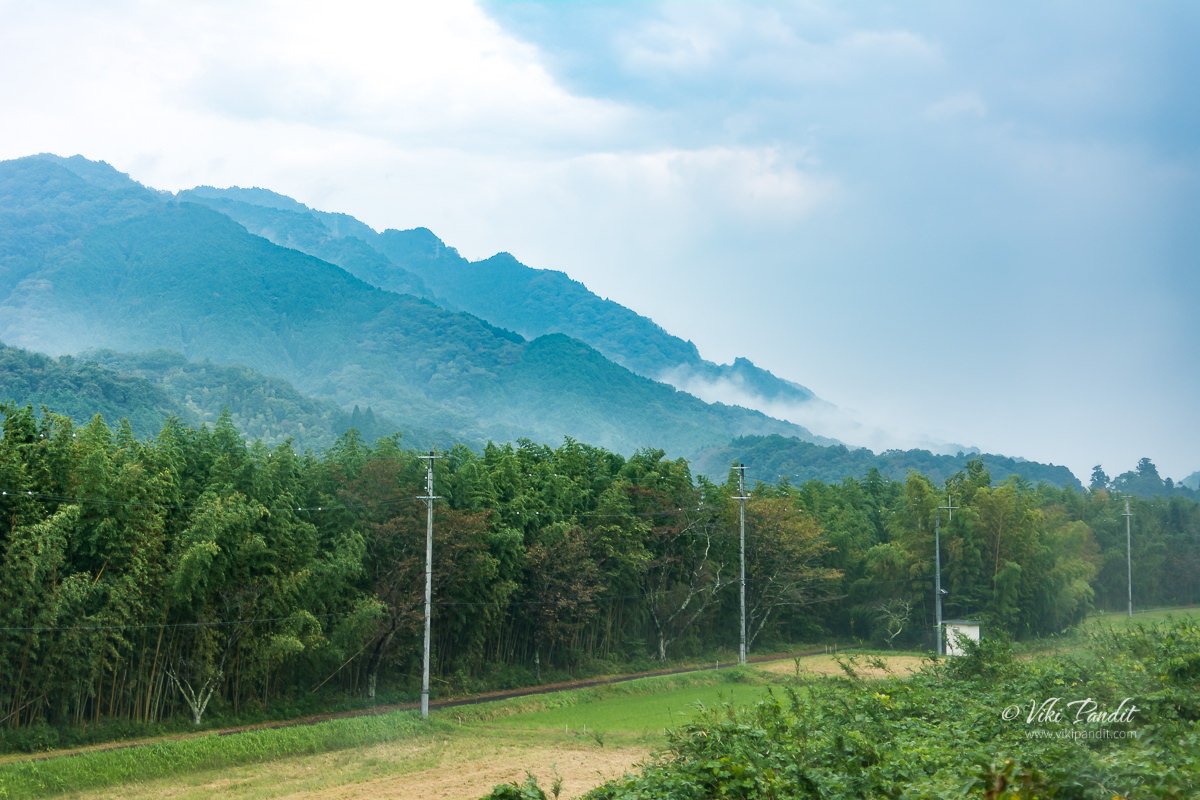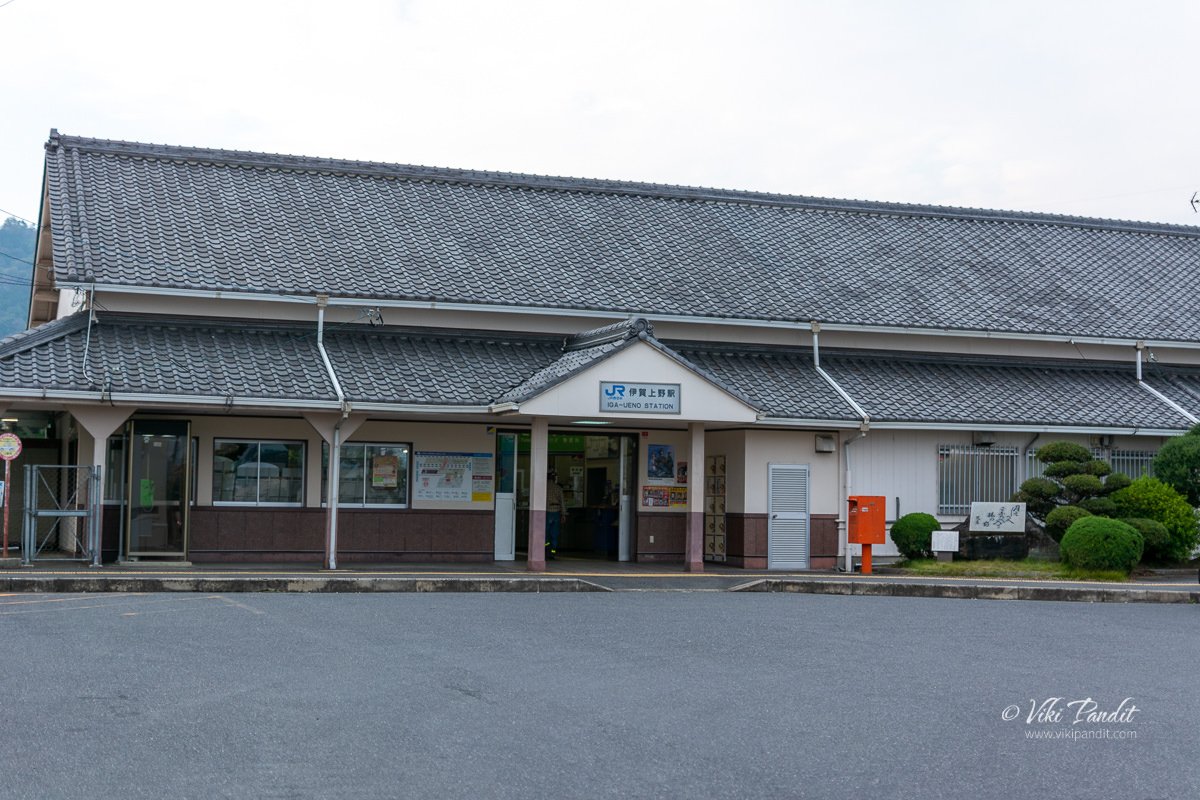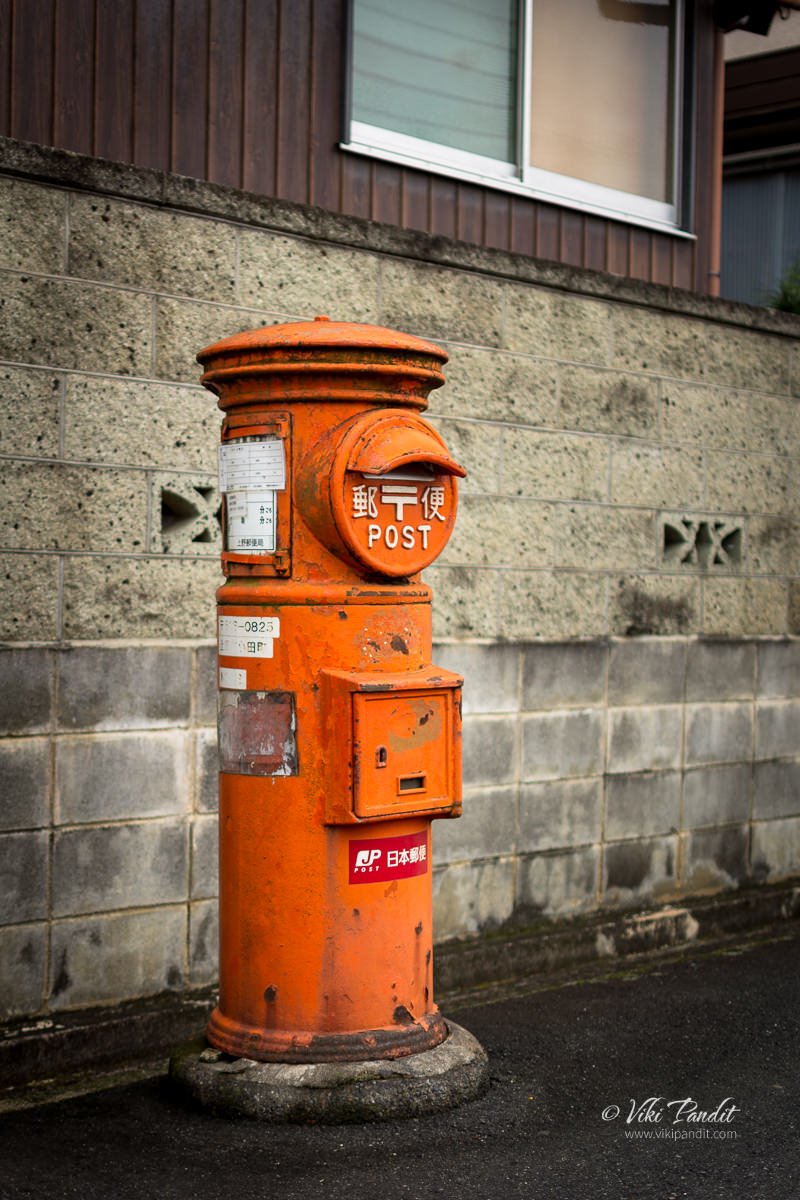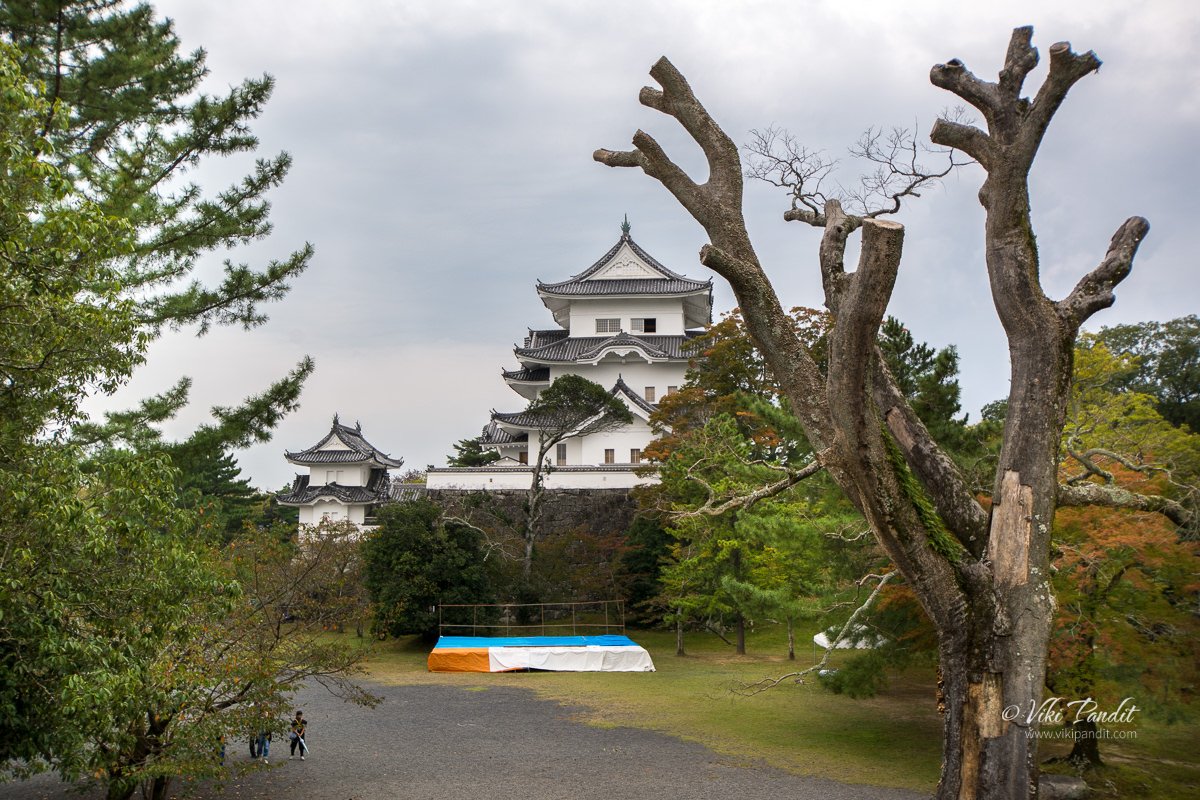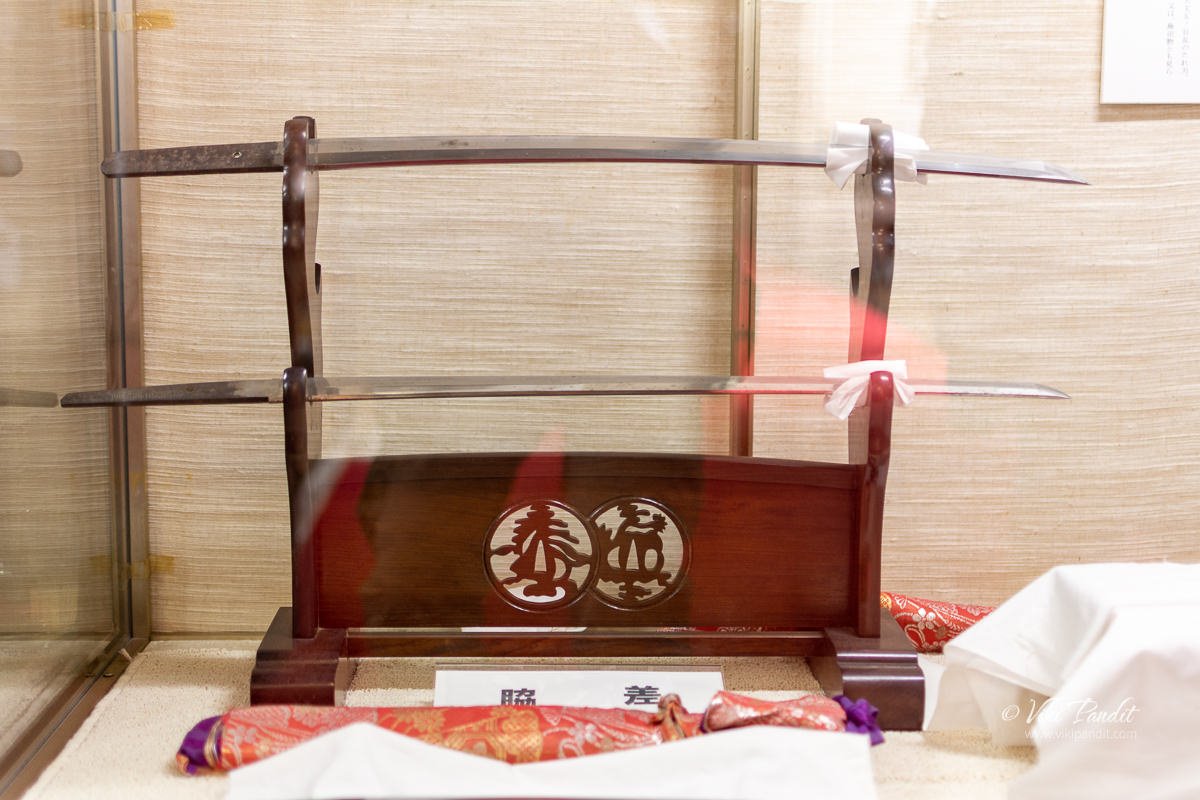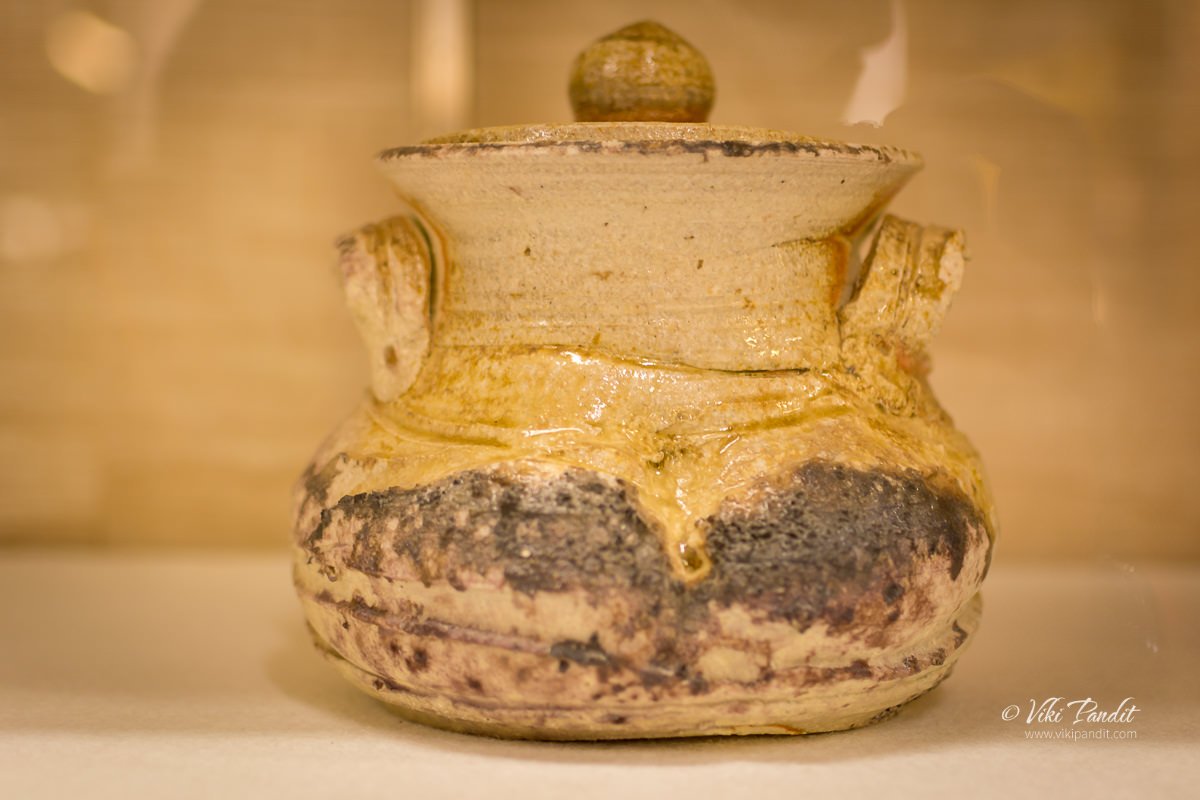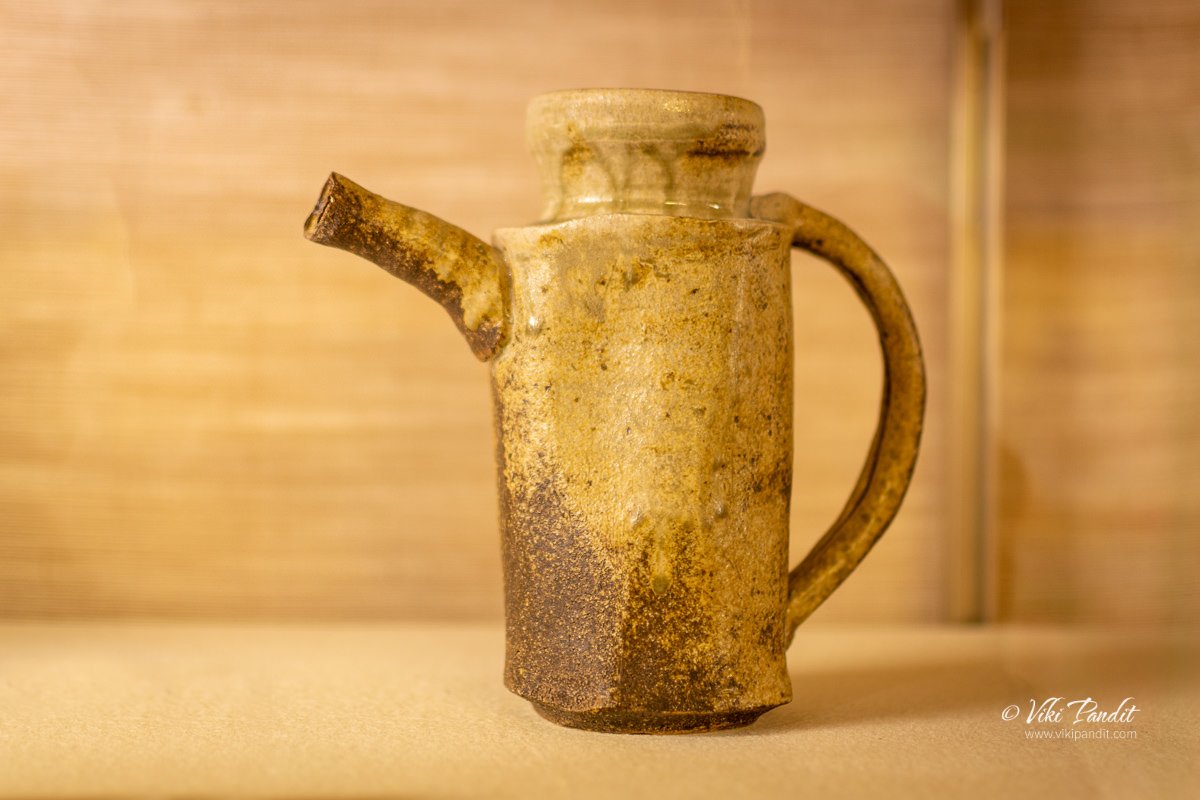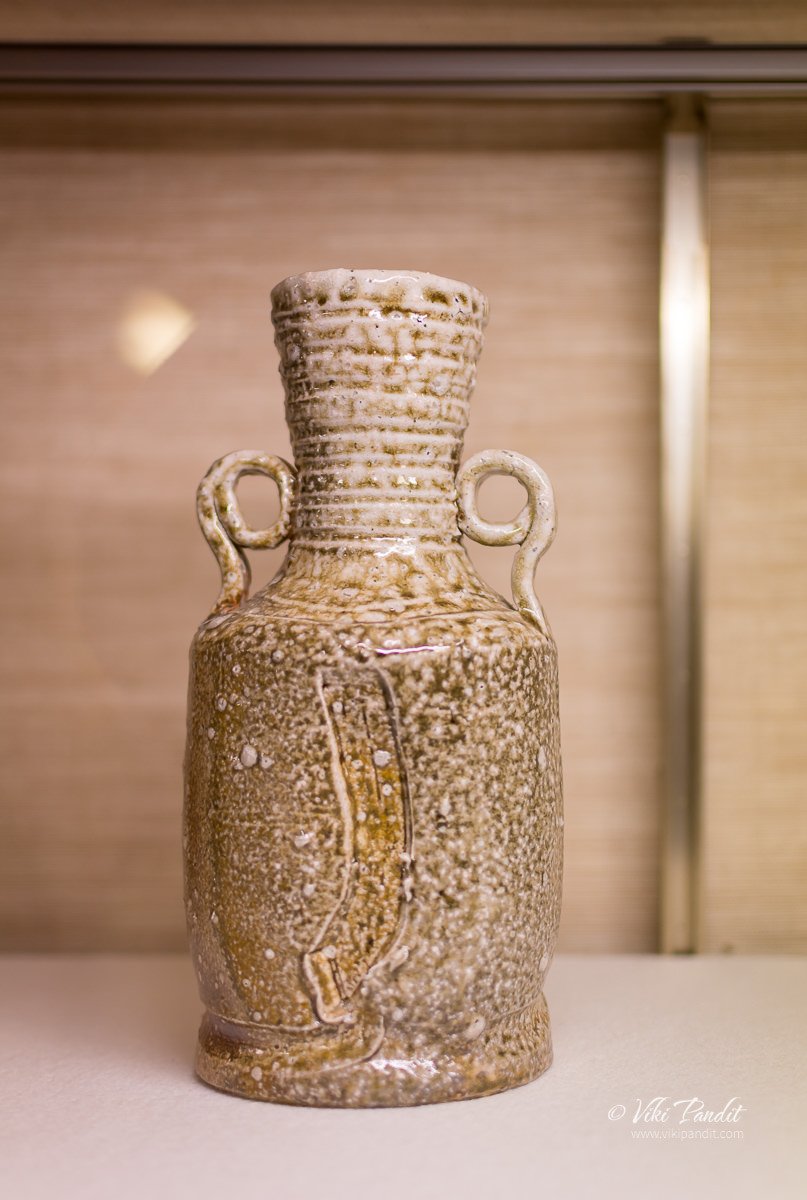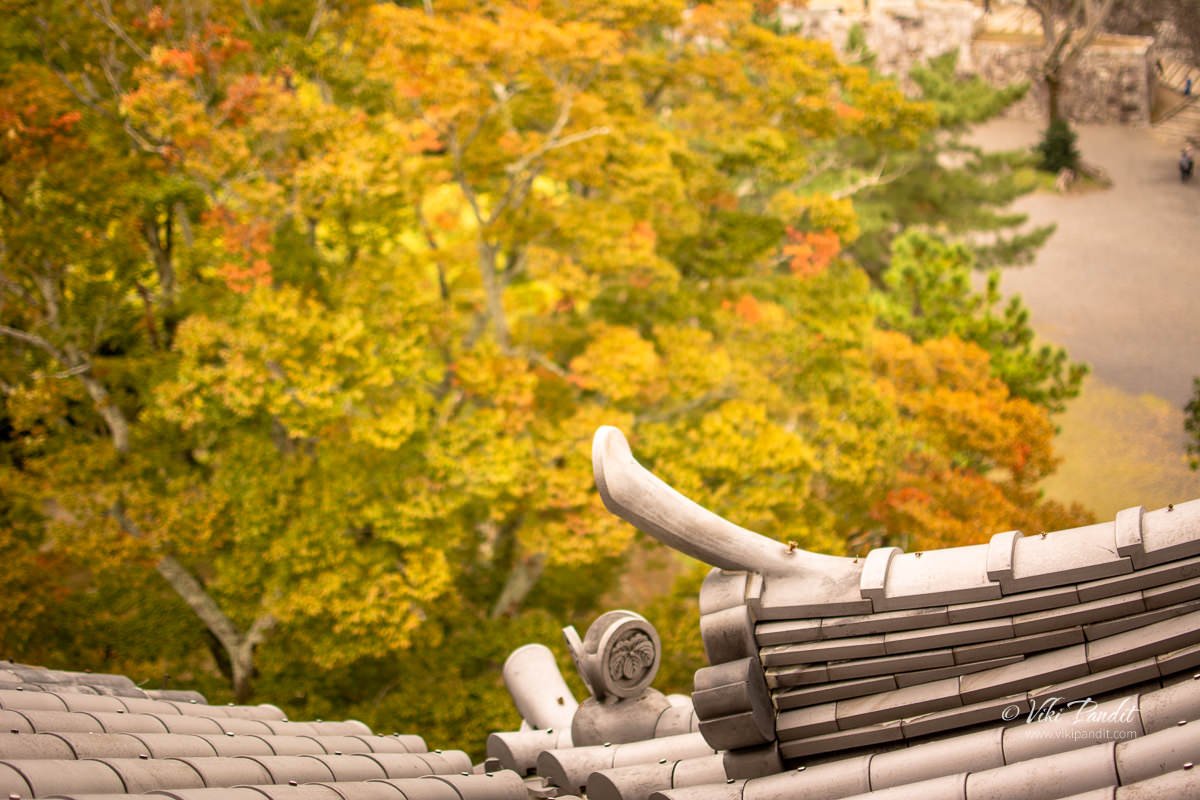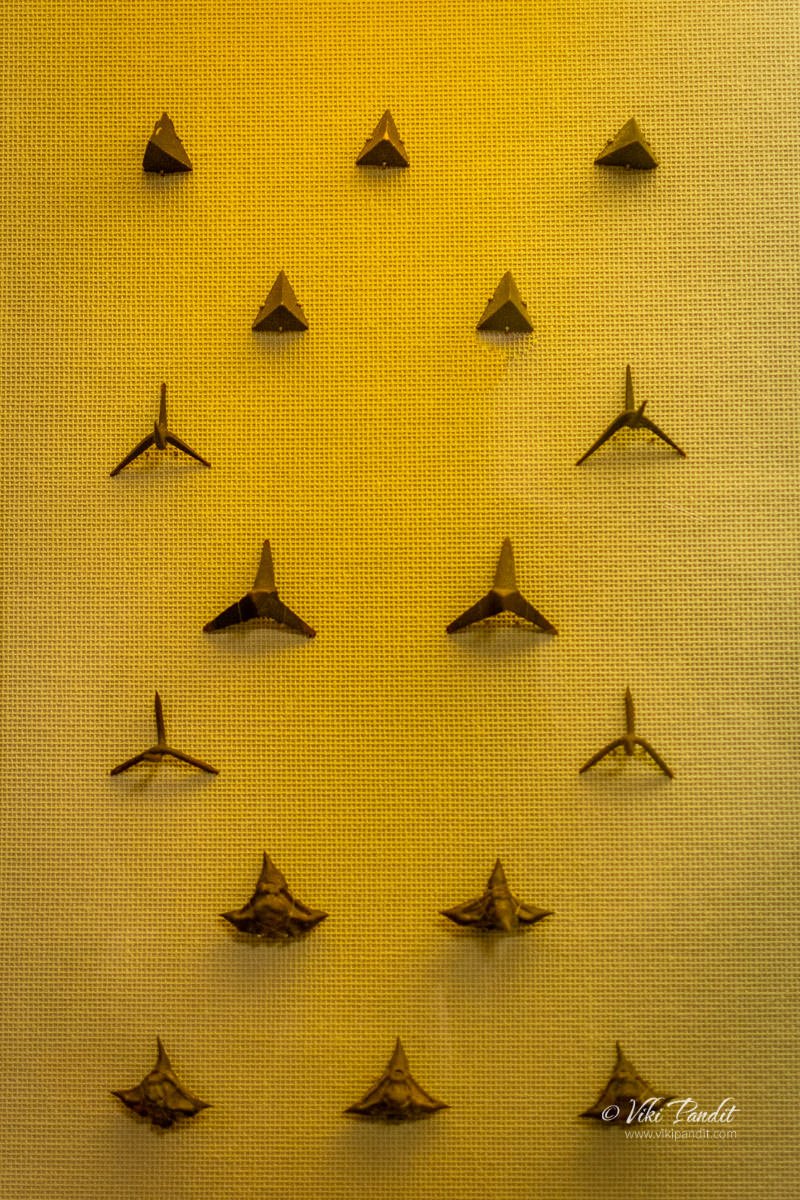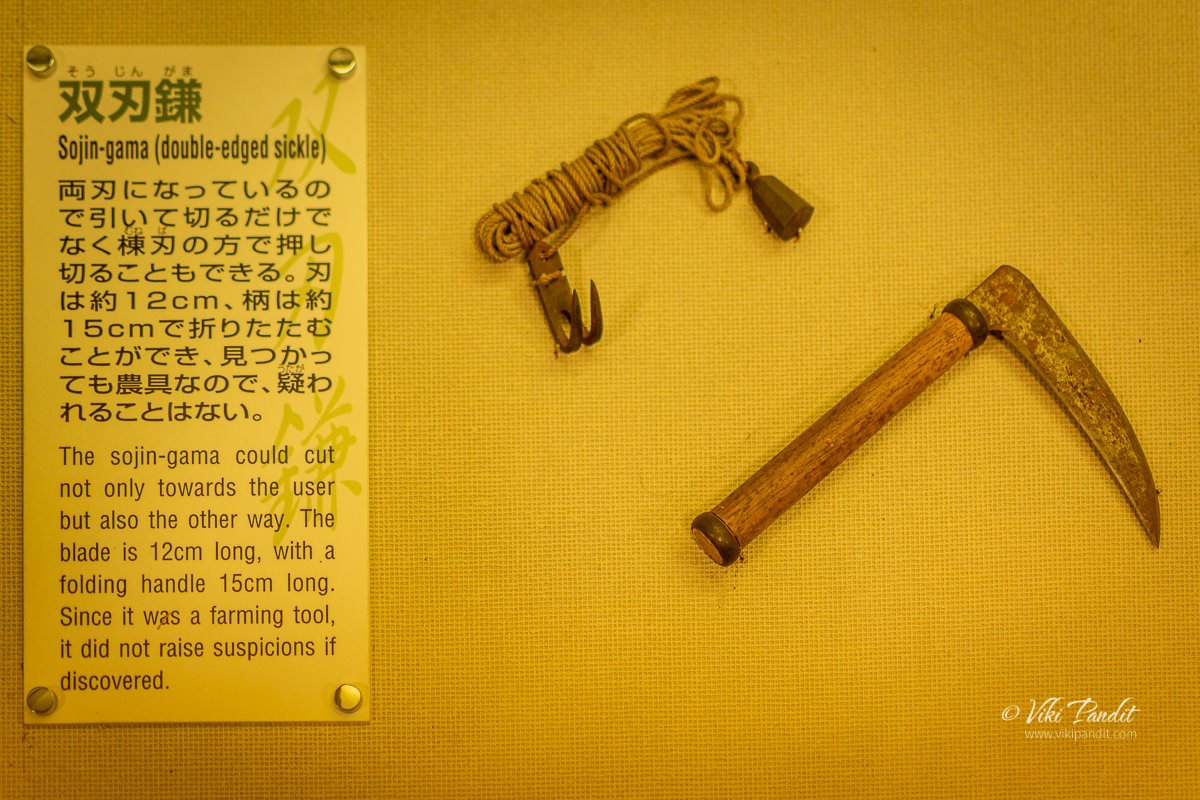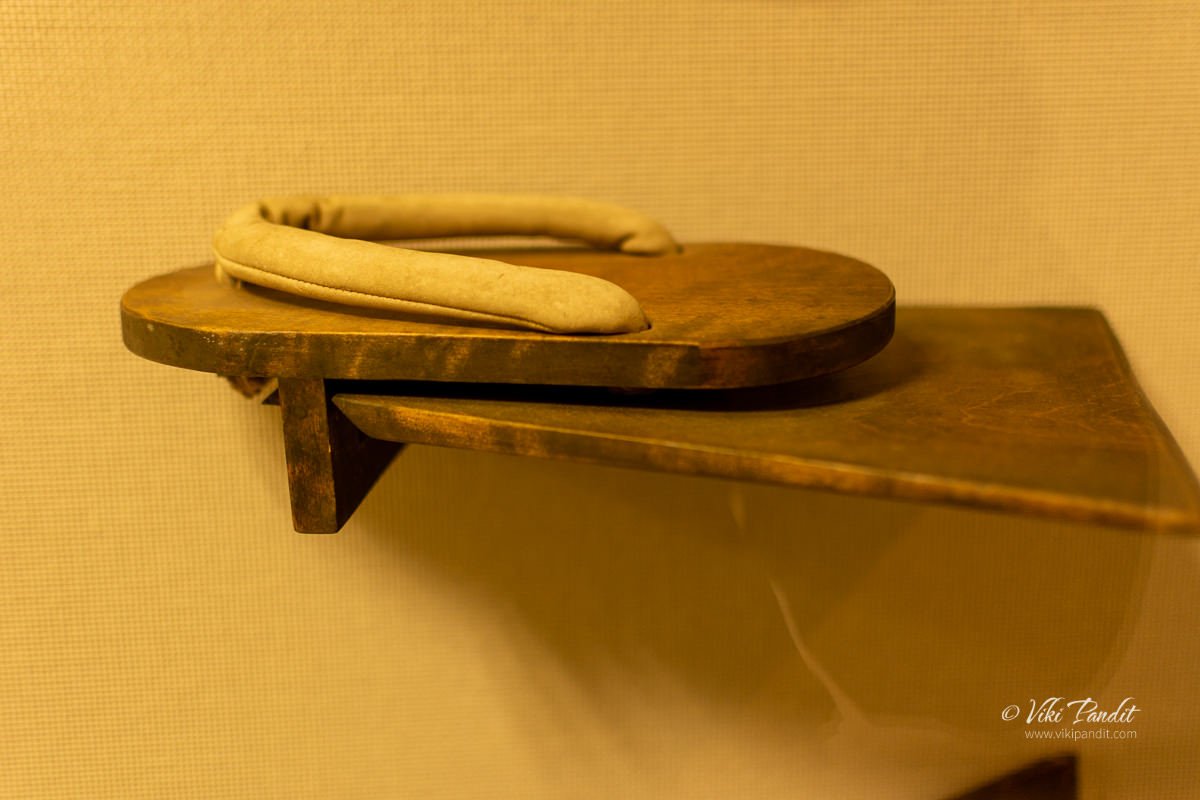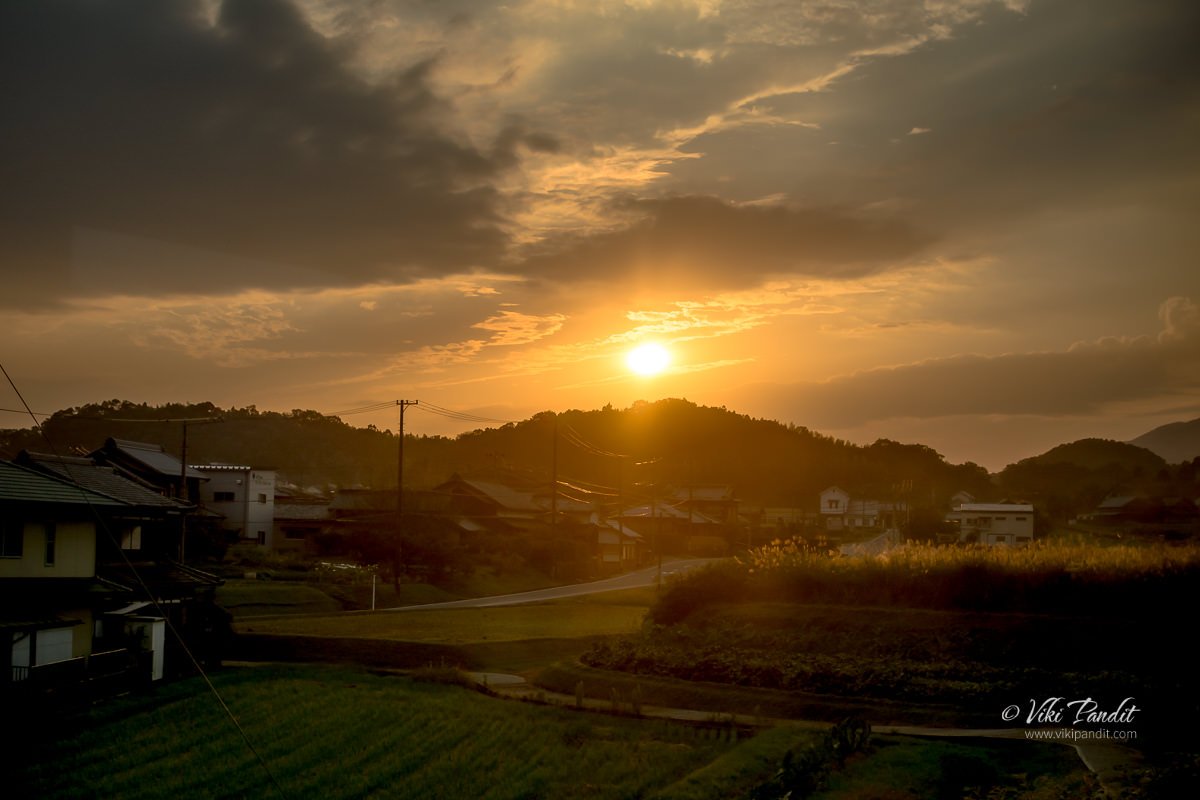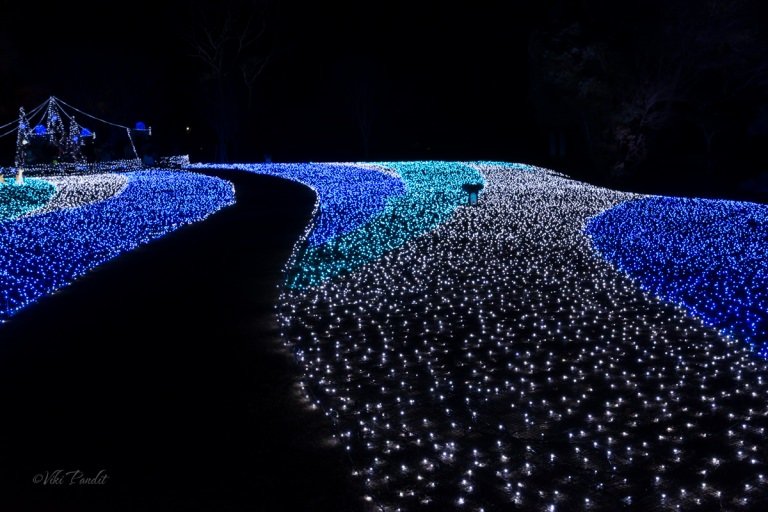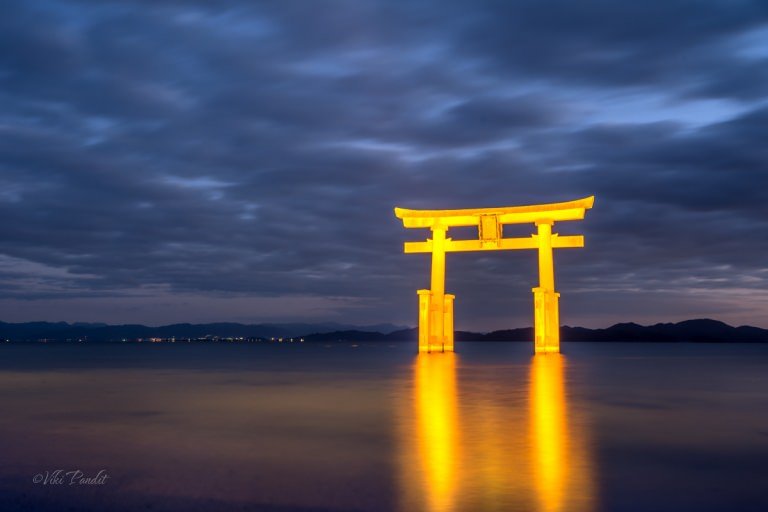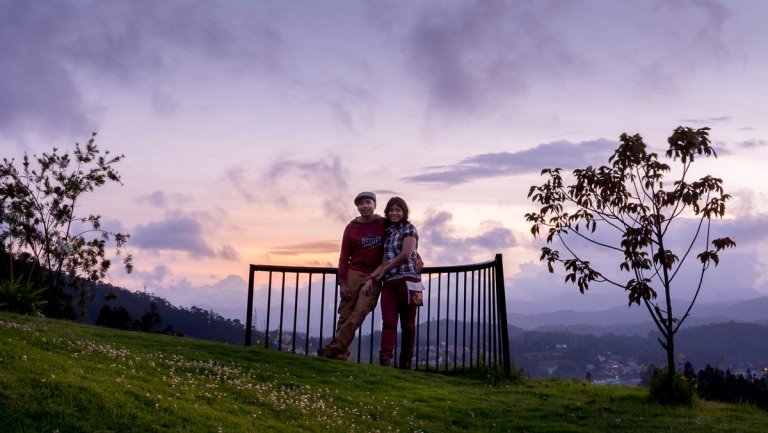It was a grey Sunday. The clouds had enveloped Nara and everything appeared gloomy. We had plans for Kyoto but seeing the depressing weather, we decided to go a bit far to escape the elements and thus the plan to visit the Ninja town of Iga Ueno came to happen.
Iga Ueno is a small town located in mountains of western Mie. It is particularly famous as the birthplace of the Iga Ninja spies & the art of Ninjutsu, but it also hides within its boundaries a few other secrets.
The origins of the Ninja is somewhat shrouded in secrecy. The art was practiced by the Shinobi or Ninja that rose to prominence during Japan’s Sengoku period in the 14th-century, but then some records also show the practice to be around as early as the Heian Era (794 CE to 1185 CE).
Ninjutsu is a systemized art of warfare used by the Ninjas, for the specific purpose of espionage. Ninjutsu developed mainly in the regions of Iga in Mie Prefecture, and Koka in Shiga Prefecture in Japan. In the village of Iga, Ninjas honed their unique skills using psychology and pharmacology, combined with martial arts.
The Ninjas would infiltrate into the enemy’s ranks, undetected using their special skills, mostly with the objectives of scouting, and obtaining valuable information. Point to note that they were predominantly spies and not warriors.
Did you know that Ninjas have been known by different names during different periods of Japanese history. Today we know them as Ninjas, because that name stuck and became popular in the Western world.
Nara to Iga Ueno
To go to Iga Ueno from Nara, one has to catch a train from JR Nara Station to Kamo Station and then switch to a local train to Iga-Ueno Station. The route should be the same if you are coming from Osaka or Kyoto.
Tickets for the full length of the travel can be purchased at one go. It cost us ¥670 per head. The platforms have information boards in English as well Japanese, so it was not difficult to follow the instructions.
The ride to Kamo was uneventful. The lush paddy fields looked lifeless in the constant drizzle. At Kamo Station, a blue colored, two coach train was waiting for us. This connecting train would take us all the way to Iga Ueno.
The rain had relented by then, leaving behind a mysterious mist. A large group of kids dressed in scout uniforms joined us on the train bringing some cheer to the otherwise mundane coach.
After Kamo, the train tracks run parallel to the Yasu River. The ride through this part of Mie Prefecture is very-picturesque. It felt like going into a mystical land. We chugged across several bamboo forests and then into the mountains engulfed by the thick mist.
The group of kids got down at Kasagi Station. They were probably heading for the Kasagi Camping Grounds by the Yasu River. Quite a few tents could be seen right from the train windows, set up on the edges of the river bed.
We reached Iga Ueno Station by noon. The skies had cleared up a bit, but it was still gray all around. The outside of the station was desolate with not a person in sight. You can find a bike rental just beside the station, if you are interested. The staff at the station was very helpful. They provided us a map with directions and helpful markings, towards Ueno Castle.
If you are coming by train get down at Uenoshi Station which is located a mere five to ten minute walk from Ueno Castle.
The castle is about 3 km away from the station. It was going to be a long walk, but it was fun walking in the cool breeze, chatting away with my wife, Mani. Coming from a crowded country like India, it felt a bit strange seeing absolutely no people around. Even the petrol pump we passed was unmanned. Time and again a car would pass us by, and that was it.
A few minutes into the walk, a car stopped and an elderly lady walked out towards us. She offered us a ride to our destination, but we politely declined, as it was much more interesting walking nonchalantly past this desolate yet beautiful suburb. She was the only person I would see for the rest of the way.
Midway to the castle, we crossed the bridge over Hattori river. Hattori Hanzo is one of the most famous Ninja Grandmaster from Iga. The river was named after him.
A few minutes after passing the bridge, we found ourselves near a field of Cosmos flowers. Cosmos is the seasonal word for “autumn” in Japan. It’s Kanji “秋桜” means “autumn cherry blossom”. Fields of cosmos can be seen in many places in Japan because they are easy to grow as long as they get a lot of sunshine.
Just before the entrance to the castle park, we stumbled upon an orange colored post box. I haven’t seen one like these in India for quite some time now. It lends a nostalgic feel to the surrounding along with the old wooden houses.
The history of Japan’s mail box began in 1871. Over the years, predominantly in the urban areas, its shape has changed into a rectangular box shape and seeing this original version, felt like we were transported to a medieval world.
After walking some 40 odd-minutes from the station, we were finally at the Ueno Castle grounds. The area surrounding the castle is a park, and the atmosphere is very relaxing. Tall trees decorate the path all the way up to the castle.
The sidewalks were littered with acorns fallen from the trees. I picked up some for feeding them to the Shika deer in Nara Park. With no one to point us in the right direction, we just kept following the map.
Ueno Castle, Iga
After the moat, a winding stone staircase leads you up to the Castle. After the morning showers, the old stone steps were wet and had moss growing at the edges. It was quite slippery to walk so we took our time as neither of us were in a hurry.
At the end of the stairs, you can find the looming castle surrounded by Momiji trees. Unlike numerous other Japanese castles which were recreated in the twentieth century utilizing concrete, Iga Ueno Castle was revamped with wood just, giving it a wonderful, unique look and environment.
Construction on Iga Ueno Castle began in 1585 CE on the command of Takigawa Katsutoshi. His successor Tsutsui Sadatsugu built the honmaru and three level main keep. After the Battle of Sekigahara (1608), Sadatsugu’s lands were confiscated by the Tokugawa and given to Todo Takatora. Todo Takatora renovated the Honmaru, increasing the walls height to 30-meters, to fortify the defenses against any resurgence by Sadatsugu’s followers, which to this day remains the tallest among all castles in Japan.
We sat on a bench in front of the castle for some time staring at one of the most beautiful architecture, I have laid my eyes upon in recent times. Because of its pure white color and mesmerizing beauty, the castle is also known as “Hakuho” or “White Phoenix Castle.”
Todo Takatora’s main keep was originally never completed, so the current keep was created using designs from nearby structures.
Exhibits at Iga Ueno Castle
Iga Ueno Castle was designated as a national treasure in 1967. The castle has three floors, with historical artifacts displayed on each floor. The ticket booth in inside the castle on the first floor. Admission tickets cost us ¥500 each. Before you enter the castle, you will have to leave your shoes at the shoe stall near the entrance to the Hall. The first floor exhibits various armor and weapons used in battle.
The most important of the exhibits is a seated model of Todo Takatora and his famous hat, which is on display both as a replica, as well as the original behind a glass case. Just in case you’re wondering, Todo Takatora was the successor of Tsutsui Sadatsugu.
As an innovative architect for many castles, Takatora developed techniques for building bigger, stronger, cheaper Sotogata type tenshu keeps, being much faster and cheaper to build than the traditional Borogata style keeps. His castles were also famed for their steep, high walls, particularly those of Iga Ueno Castle. He also perfected the Masugata type, or Death Box of gate systems, greatly strengthening the defense of the many castles he designed.
Visitors can see the intricate details of traditional body armor and battle helmets up close as they walk through the exhibition room. Fortunately photography is allowed inside.
A sujikabuto is a type of helmet that occurred in the late Kamakura period and the Northern and Southern eras of Japan. Unlike a star helmet, it does not show the studs that hold the iron plates that form the helmet body, but twists the edges of the iron plates to make the joints look like streaks.
You can also find a miniature model of the Iga Ueno Castle among the exhibits.
Below you can find a couple of wakizashi swords on display at the museum. The wakizashi has a blade between 30 and 60 cm. The katana was the big or long sword and the wakizashi the “little” or companion sword. It being carried together with the katana was the official sign that the wearer was a samurai or swordsman.
The wakizashi is a traditionally made Japanese sword worn by the samurai in feudal Japan
Iga-yaki
An extremely narrow wooden staircase leads up to the second floor. This floor displays ceramic utensils from the Edo Period (1603-1868). Iga has a long history with ceramics and its utensils referred to as Iga yaki have come to be loved by many masters of the tea ceremony.
The history of Japanese ceramics began with Jomon earthenware, followed by Yayoi (300 BCE – 250 CE) and later in the Kofun period (300 CE to 538 CE) the technique was succeeded by Hajiware and haniwa terracotta figures. Iga yaki is a specially referred to the porcelain produced in this area, surrounding the city of Iga.
In ancient times, the ever-popular Lake Biwa, which is now limited to the Shiga prefecture, used to extended all the way to Iga. Over centuries, even though the lake gradually receded from the area, it left behind its rich clay. This clay fostered the production of Iga yaki, an art of earth and fire that has withstood the test of time.
Iga ware’s origins are believed to date to the second half of the 7th century and 8th century CE, during the Nara period (710-794). Shigaraki and Iga, which are adjacent to each other have had a close relationship since the medieval period in terms of pottery styles. Back then, there was not a significant difference between Iga ware and Shiga-raki styles. It was often said that there are “Handles on Iga, no handles on Shigaraki,” since the handle was almost the only difference that distinguished the products of the two localities.
The items baked at the time were mainly mortars and pots. These early Iga ware is referred to as “old Iga” (Ko-Iga). These usually had wavelike patterns made by spatula scraping or stamped lattice patterns.
The main point of divergence from Iga-ware came during the Azuchi-Momoyama period (1574–1600), when tea ceremony culture was also flourishing. Many distinctive pieces of Iga ware were produced at this time, including pieces with wave-like patterns that were created using spatulas or a technique of deliberately breaking the piece by hand to generate an “out-of-tune beauty”.
Characteristically, Iga ware has a asymmetrical beauty created by deliberately distorting well-shaped forms and making each piece unique. This style of Iga-ware was backed by Tsutsui Sadatsugu, feudal lord of what was then Iga province, and Takatora Todo, also a feudal lord. These kinds of pieces were particularly prized in tea ceremonies for the sense of wabi-sabi they evoked. The most well-known kilns were at Makiyama and Marubashira, in the Ayama district of Iga city.
Iga ware uses local clay which is extremely resistant to heat, reacts well to repeated firing, and is fired over three days in a kiln dug into the ground. The clay tends to have a high level of hardness and is created on a pottery wheel. The potter delicately uses a spatula to give curvature. This distinctive curve lets the flames lick over the round edge. Furthermore, tiny pebbles in the clay give it additional surface texture.
The surface texture of Iga ware comes about from the long firing at high temperatures whereby the ashes fall on the pots and turn a glassy green. Features such as ash glaze, black scorching, and cracks can all be seen as natural effects of the firing process. The reddish color of Iga ware is a result of the red flames hitting the grainy stone textured clay in the kiln. When moistened, the glassy green glaze on these vessels glistens, heightening the taste of foods or sake.
The lugs on an Iga ware vase are called “ears” (mimitsuki). Vases tend to be made out of rough clay, sometimes with tiny white stones added. In the past these were kneaded by hand, which gave it a distorted form and thus character, but later production by wheel also developed.
Iga-ware does not use applied glaze. Instead it is fired at a very high temperature in a kiln causing it to crystallize in a reddish hue, often with brown-grey scorch marks caused by log ashes called koge, and a translucent green ash glaze from the burning wood forms. This occurs when firewood ash melts at 1400 Celsius.
Since they are free of impurities, a clear jade translucent glass called biidoro is created. Sometimes the biidoro glass coagulates to form a globule called a “dragonfly eye.” The clay’s durability means it can be fired multiple times without cracking, sometimes up to three times. The ash glaze builds up in layers and produces a translucence which does not form in modern gas-fired kilns.
The walls on this level contain pictures of some of the most important castles in Japan. While Mani was checking out the artifacts, I was taking mental notes of the castles I must visit on my next trip to Japan. From here a wooden staircase leads to the observatory on the third floor where visitors can gaze upon the whole town.
It was a bit early for the Fall, but in the mountains, the leaves had already started to change color.
Iga-ryu Ninja House
After coming out of the Castle, we walked around on the grounds. We came across a souvenir shop. It was a bit crowded, so we decided to come back to it later. A few meters beyond the shop we reached the Ninja House. Tickets to the Ninja House costs ¥700 each. They organize an immersive Ninja martial art demonstration for visitors.
The Iga-ryu Ninja House is maintained by actual descendants of Ninjas. The innocuous house is full of smart contraptions, such as trick doors (Shikakedo), secret passages (Nukemichi) and even false floors to hide weapons. A lady guide, dressed as Kunoichi (female ninja), demonstrated to us how these were used by the Ninjas to avoid conflict or overpower stronger foes.
Room by room, the lady showed us how the Ninjas set up hidden traps in preparation for enemy attacks. Ordinary-looking walls that revolve so Ninjas could hide behind to attack unsuspecting enemies. Hidden escape routes that secretly lead outside of the house. It was fun!
The annual “Iga Ueno Ninja Festa” is held from 1st April to 4th May. During that time the city comes to life with many exhibits, competitions and the opportunity for the visitors to practice their Ninja skills.
Iga-ryu Ninja Museum
After the marvelous show at Ninja House, we walked towards the Ninja Tradition Hall. The Ninja Tradition Hall is a place where visitors can learn about the history of Ninja and look at documents and other materials. In the hall, various tools are displayed, including weapons, code books and gunpowder.
I found some peasant dolls near the entrance. If you are interested in Japanese dolls, try to visit the Saitama Doll Museum.
Here we can see various types of weapons on display, that the Ninjas used. Makibishi are sharp spiked objects that were used in feudal Japan by the Ninjas to slow down pursuers. These iron caltrops could penetrate the thin soles of the shoes such as the waraji sandals that were commonly worn in feudal Japan.
The most popular, Shuriken (throwing blades) are on display here. Also known as throwing stars or ninja stars, the Shuriken were originally designed in many different shapes.
These weapons were thrown to inflict a wound on the enemy. Ninjas used to poison the edges of the blade of Shuriken to make it more potent. Although the range of Shuriken is short about 6 to 7 meter with an expert, it could be said that Shuriken was an excellent weapon in times of eluding pursuit.
You can also find the Sojin-gama tools here. The Sojin-gama was originally a farming tool but could easily double up as a weapon. Because of its use in farming, Ninjas could move around with it without arousing any suspicion.
Here we see a Mizugumo on display. The devices were worn on the feet to walk on water. However it was not really meant for walking on water but though marshy areas where regular shoes would stick in the mud .
Towards the end of the hall is the museum shop, Ninjabo. They sell various ninja goods, including ninja stars. We bought some souvenirs from here.
On our way back we stopped at a Ramen shop for lunch at the Aikat-tei restaurant. The restaurant lies inside the castle grounds near the museum.
After lunch we walked across to the souvenir shop and bought a few gifts. We wandered around the grounds for a bit and then started on the long walk back to the Iga Ueno Station. The old, meandering streets were still very empty, which was kind of nice as we could enjoy the old houses without the usual crowds.
On the way we stopped for a bit at a Mall along the road. I bought some Meiji chocolates for gifting friends in India and then we were back on the road to the train station. As we walked past the Hattori river, it was looking lovely in the dying sunlight.
The clouds had gathered again. The sun was fighting with the thick clouds to take a peep at the Earth by the time we reached the station. The local trains are scheduled every hour, so we had to wait for a while before the train came along.
From the train, I took some beautiful dusk shots as we headed back to Nara.
Thanks for reading. Please leave me a comment if you liked the post or follow my story as I visit the home of Buddha – Todai-ji.
1585 CE
Tsutsui Sadatsugu
¥ 500 (Castle only)
¥ 1500 yen (Castle, Ninja Museum and Danjiri Kaikan)
Ueno Castle is located a five to ten minute walk north of Uenoshi Station.
Disclaimer: The information presented in this article is based on the time I visited the premises. Note that there might be changes in the prices of merchandise and admission fees that might have occurred after this article was published. At times the facility might also be closed for repairs or for variety of other reasons. Kindly contact the facility or facilities mentioned in this article directly before visiting.
Usage of this site indicates acceptance of my Terms and Conditions.
Credits: The historical information presented herein is gathered mostly from local guides that were re-inforced via historical writings.

